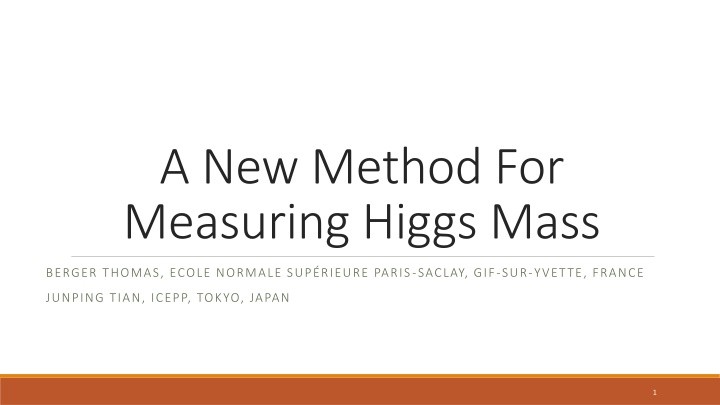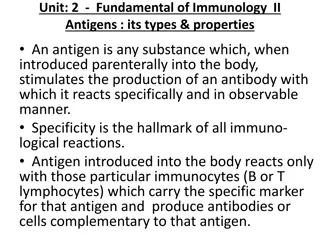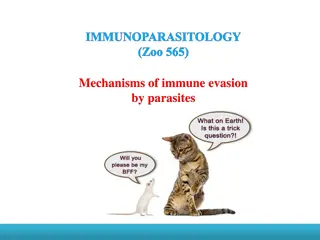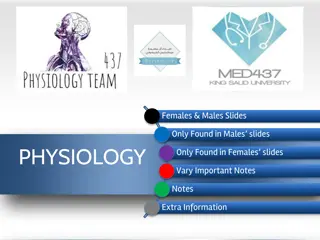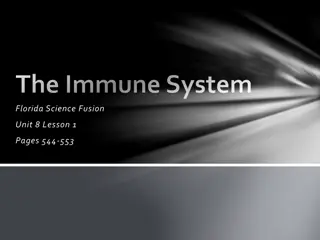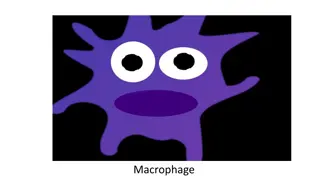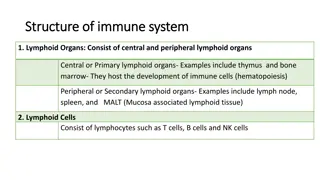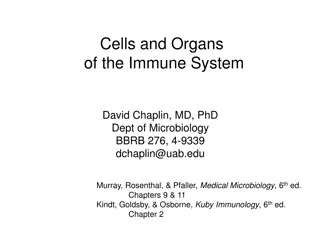Immune Responses: Innate Defenses - Mechanisms and Functions
The innate immune responses characterized by mechanical and chemical protection, interferons, natural killer cells, and phagocytosis. Learn about key defense mechanisms such as inflammation and the stages of phagocytosis. Dive into the essential components of the body's nonspecific defenses against foreign invaders.
Download Presentation

Please find below an Image/Link to download the presentation.
The content on the website is provided AS IS for your information and personal use only. It may not be sold, licensed, or shared on other websites without obtaining consent from the author.If you encounter any issues during the download, it is possible that the publisher has removed the file from their server.
You are allowed to download the files provided on this website for personal or commercial use, subject to the condition that they are used lawfully. All files are the property of their respective owners.
The content on the website is provided AS IS for your information and personal use only. It may not be sold, licensed, or shared on other websites without obtaining consent from the author.
E N D
Presentation Transcript
A New Method For Measuring Higgs Mass BERGER THOMAS, ECOLE NORMALE SUP RIEURE PARIS-SACLAY, GIF-SUR-YVETTE, FRANCE JUNPING TIAN, ICEPP, TOKYO, JAPAN 1
Table Of Contents I- Introduction II- A new method III- Simulations without Background IV- Full simulations V- Conclusion
ILC: International Linear Collider 20km e+e- colliders project in Japan to create and study the Higgs boson and high energies Initial operation at 250 GeV but improvements up to 500 GeV and 1TeV possible. ILC for collisions at 250GeV with upgrades to 500GeV and up to 1TeV possible. (linearcollider.org) 3
mH is a crucial parameter in the calculation of couplings: HZZ* or HWW* The theory is very sensitive to precision on mass: (? ?? ) (? ?? )= 16 ?? ??, (? ?? ) (? ?? )= 14 ?? ?? For an accuracy of 0.1% to 0.5%, an uncertainty of 16 to 80MeV is required for mH. This will be our criterion for this study. 4
Classical Methods For mH: At LHC, Higgs is reconstructed directly from measurements of momentum of each decay product using invariant mass. At ILC, another method studied is the Recoil mass with ???????given by full 4-momentum conservation. Main drawback is a long tail for m>mH. Processes used to measure mHat LHC (left) and Higgstrahlung (right) used in this study 5
1, 2 are H decay products, pt the transverse momentum and , the different angles of jets. Using only transverse momentum conservation instead of full 4-momentum conversion: sin(? ?2) sin(?1) sin(?1 ?) sin(?2) ?1sin?1cos?1+ ?2sin?2cos?2= ?? ?1sin?1sin?1+ ?2sin?2sin?2= ?? ?? ?1 ?2 = , sin ?12 Advantages: -no energy dependence of the jets in the mass, only their directions. -Less uncertainty about the energy calibration of beams (Beamstrahlung, ISR), especially at high energies. -Complementary method to the "Recoil Mass" method which will be used at ILC. 6
Proposed New Method: The process studied here is: e+e- ZH, Z + - where we will compare H + -and H bb . Only transverse momentum used here. A study at 500 GeV of H bb has already been done by J. Tian and this one will be done at 250 GeV for 2 modes of H. Higgstrahlung Process studied for our signal with Z 2 leptons for maximum accuracy 7
Simulation Setup Whizard: event generator with the ISR and the Beamstrahlung. The hadronization and parton jets are done by Pythia. ILCSoft package including: GEANT4: Simulates detectors and output signals. PandoraPFA and LCFIPlus: Event reconstruction with particle flow analysis and jets reconstruction The analysis is done at 250 GeV and for 2 possible polarizations: ? =?? ?? ??+??= (-0,8 , 0,3) or (0,8, -0,3) for (e-, e+) Integrated luminosity: ??? = 2000 ?? 1 8
Resolution For Jet Angles: The data are computed for the 2 decay modes and compared on graphs The absolute resolutions on the angles and relative on mH are adjusted by Gaussians on ROOT to obtain the errors. Similar distributions in each case but seems to have better peaks 9
mHmeasurement: ?1[ ] ?1[ ] Resolution mH[GeV] Mode bb 0,80 0,03 0,92 0,02 4,17 0,16 Mode + - 0,67 0,01 0,73 0,01 4,51 0,14 With a 2000fb-1luminosity, a 100% efficiency and channel for Z decay assuming no background, The error is ???= ?? ?~20 MeV for bb and ~100 MeV for + -. 10
IV-Full Simulations A pre-selection is made to find pairs of isolated leptons that can come from a Z . Loose cuts are applied to the lepton pair on the angles and mass. Remaining particles are clustered in jets using a Durham algorithm. Signal processing of H bb ; Cut 1: the pair of leptons must be 2 muons with a mass close to mH to the nearest 10GeV Cut 2:nChargedPFOs>3 in each jets Cut 3:Evis+Elep>150 GeV Cut 4: b-likeness > 0,66 Cut 5: The angle of the lepton pair must be abs(cos) < 0,9 Cut 6: Tight cut on the ground found: 110<mHnew<150 GeV 11
Criteria for cuts : ??????? = ???????+ ??????????? ?????? ??? ??????? ??? Must be optimized for: ? ??(? bb ) ? ??(? bb )=1 60% efficiency and 72 of significance for the bb mode. = An adjustment by a Gaussian fit gives: mH=125,28 0,019 GeV 1 =1,35% 12
H, leptons are reconstructed as jets so the previous work can be adapted to this decay channel for the Higgs boson. New criteria are to be applied Cut 1: Same as the bb mode Cut 2: nPFOsCharg es<4 in each jet because decays into 1 or 3 charged particles Cut 3: Evis+Elep>100 GeV Cut 4: Evis+Elep<220 GeV (Hadronic noise suppression) Cut 5: abs(cos) < 0,9 Cut 6: At least 1 charged particle nChargedPFOs>0 (Hadronic noise suppression) Cut 7: Cut on the value of the system's Recoil Mass: 110<mrecoil<150 GeV Cut 8: Cut on the found mass: 110<mHnew<150 GeV 13
Worse performance with 48% efficiency and =15. Much lower number of events because H 6% H bb 58% The fit gives: mH=125,31 0,072 GeV 1 =6,67% 14
Possible improvements: Use the position of the decay vertices and the interacion point to measure the direction of the b momentum or momentum Sharper peak for : =2GeV Few statistics Could be used to the LHC or add channels such as Z e+e+. 15
For bb, more events but worse performance than before without using decay vertex reconstruction: =7,4 GeV By studying the resolution on mH, the difference between the mass of the reconstructed jets and the expected mass of a b quark. The peaks are not centered at 0. 16
Conclusion Thus, the proposed new method obtains accuracies comparable to those needed to study the Higgs boson for the bb mode and for the mode by finding the decay vertex for the leptons. Noise filtering is effective for these processes with a good significance obtained and a good accuracy. To increase accuracy, Z hadrons can be studied with H to have 20 times more events. Cuts can be improved for H bb with multivariable analysis. 17
